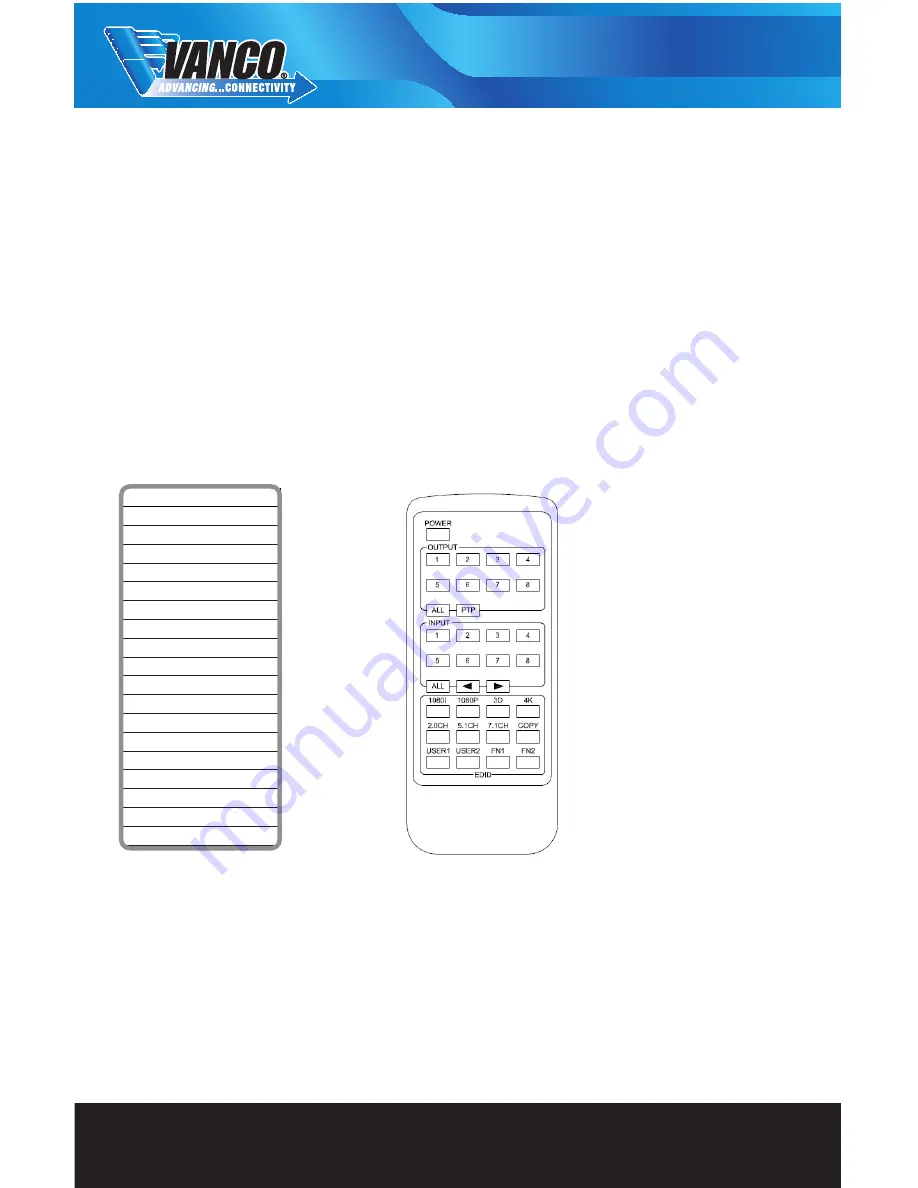
www.vanco1.com
800-626-6445
8
EDID
The EDID switch allows for EDID learning or to pre-set an EDID to encourage a “handshake” between the
display and source.
The EDID learning function is only necessary whenever any display on the HDMI output port is not outputting
audio and/or video properly. Because the HDMI source devices and displays may have various level of capability
in playing audio and video, the general principle is that the source device will output the lowest standards in
audio format and video resolutions to be acceptable among all HDMI displays connected. In this case, a 720p
stereo HDMI signal output would be probably the safest choice. The EDID function can also force the matrix to
learn the EDID of the lowest capable HDMI display among others to make sure all displays are capable to play
the HDMI signals normally.
There are two methods for EDID Learning as shown below:
1. IR Remote Control: Please refer to the Operation Control – IR Remote Control section
2. Software Control: Please refer to the Operation Control – EDID section
EDID Settings:
Here is a list of the supported EDID settings:
Select EDID
1080i, Stereo Audio 2.0
1080i, DOLBY/DTS 5.1
1080i, HD AUDIO 7.1
1080p, Stereo Audio 2.0
1080p, DOLBY/DTS 5.1
1080p, HD AUDIO 7.1
3D, Stereo Audio 2.0
3D, DOLBY/DTS 5.1
3D, HD AUDIO 7.1
4K2K, Stereo Audio 2.0
4K2K, DOLBY/DTS 5.1
4K2K, HD AUDIO 7.1
1024x768 DVI
1920x1080 DVI
1920x1200 DVI
User 1
User 2
Default EDID
OPERATION CONTROL - IR REMOTE CONTROL
Selecting what you want to watch on each display.
Output and Input routing:
Simply select which TV or display (output #) you want to change the input on, then select the input number.
To scroll through all the inputs, instead of selecting the specific input, simply press the left or right arrow to
go through each input.
To have one source displayed on all TVs, simply press ALL under OUTPUT section, then select which input you
want to have duplicated on every display.
The PTP button will mirror all of the inputs and outputs, for example, Input 1 to Output 1, Input 2 to Output 2,
etc.























